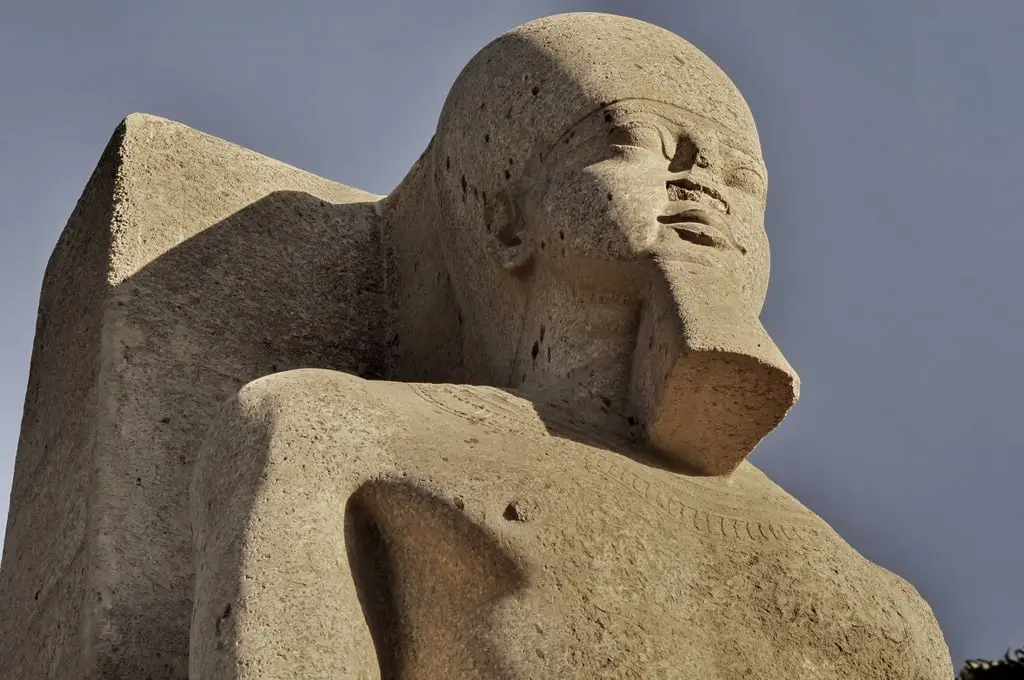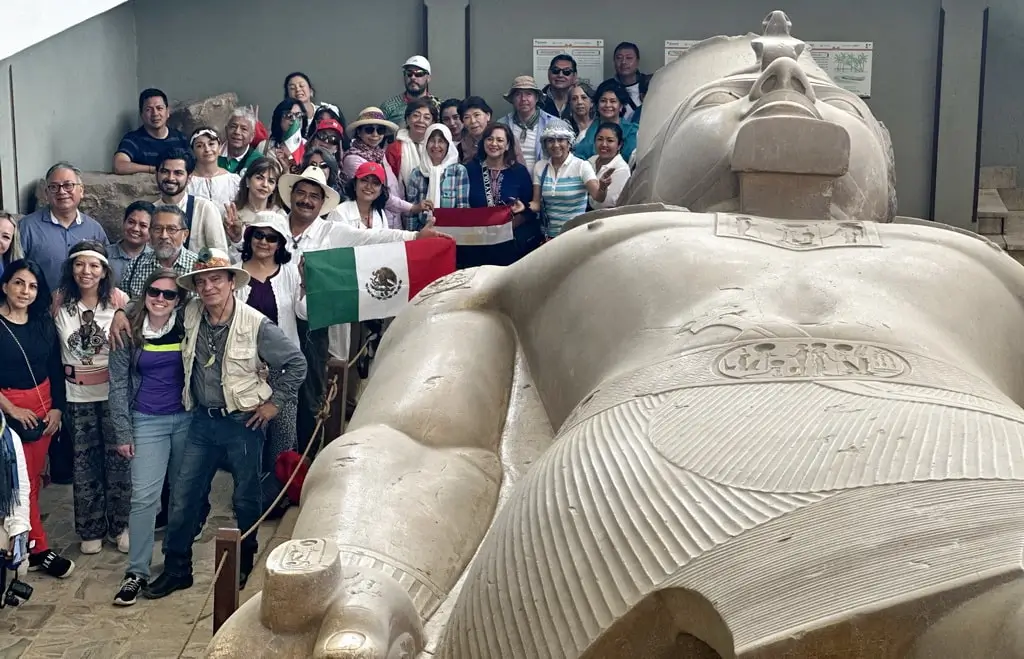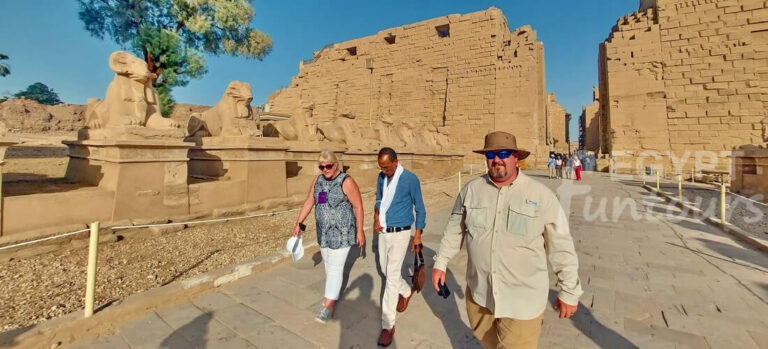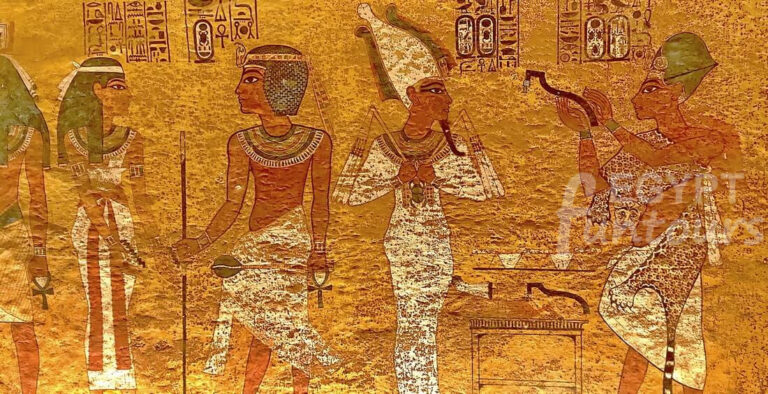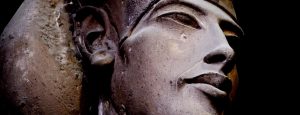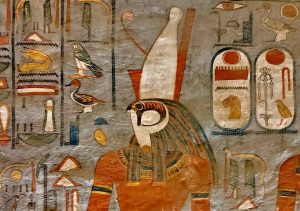Most tourists rush past Memphis. On their way to the pyramids of Saqqara, tour buses often treat the Memphis Open-Air Museum as a 20-minute restroom stop. This is a mistake. Located in the dusty village of Mit Rahina (which sits directly on top of the ancient capital), this museum holds a heavyweight champion of Egyptian art. It offers an experience you cannot get at the Giza Plateau or the Grand Egyptian Museum (GEM). At Giza, you look at the statues from a distance. At Mit Rahina, you can look a giant in the eye.
The Confusion: Which Colossus is This?
Before you visit, you must clarify which Ramesses you are seeing.
- The Granite Colossus: This is the famous standing statue that used to be in Ramses Square. It has been moved to the atrium of the GEM.
- The Limestone Colossus: This is the one at Mit Rahina. It is lying down. It never left Memphis because it was too heavy and too broken to steal.
Because it is lying on its back, you can walk on a bridge directly over the Pharaoh’s chest. You can see the muscles, the jewelry, and the hidden daggers closer than any other royal statue in Egypt. In this guide, we will walk you through the viewing gallery of the Fallen Giant, explore the mystery of the Alabaster Sphinx, and help you find the hidden Apis Bull embalming tables in the garden.



